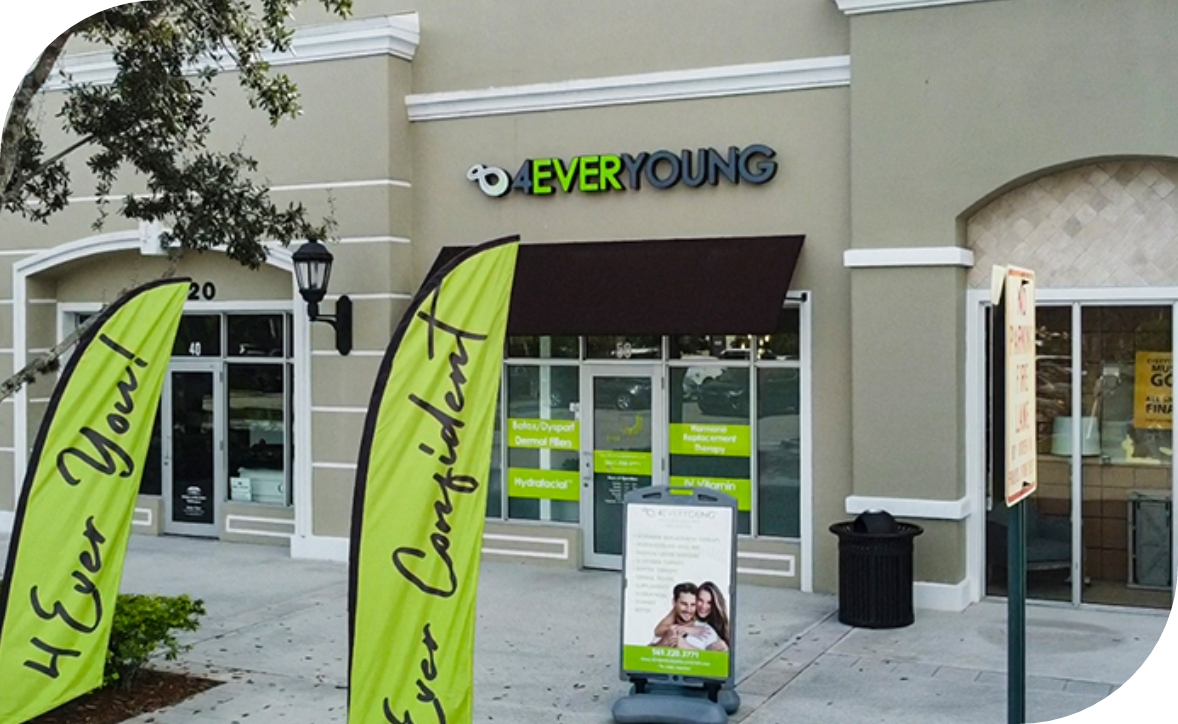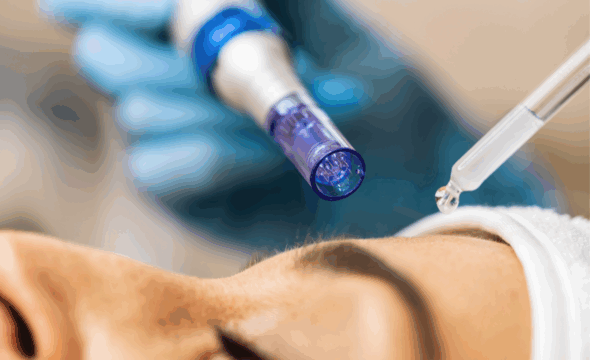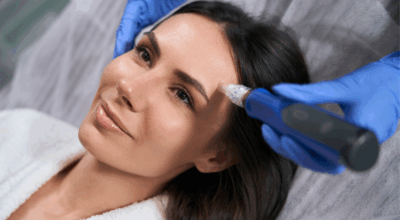How Much Does Microneedling Cost? Price Factors to Consider
Before booking your first session, it’s important to get a clear idea of the total microneedling cost. Several hidden factors can influence the actual amount you pay. Knowing these details in advance allows you to avoid surprise expenses and plan accordingly. Whether you’re interested in one session or several, understanding what drives the price helps you compare clinics more confidently. From the provider’s qualifications to the location of your treatment, every choice affects how much you’ll spend. Getting familiar with these details ensures that your skin investment aligns with your budget.
Core Cost Range and Treatment Scope
Average Per-Session Pricing
The microneedling price range can vary widely depending on your location and the clinic’s reputation. On average, a single session typically falls between $200 and $700. Clinics in larger cities may charge more due to higher overhead costs, while smaller towns often offer more affordable rates. Some providers may offer a discount if you purchase multiple sessions up front. It’s also essential to confirm whether the fee includes both consultation and aftercare. Comparing prices without knowing what’s covered can lead to misjudging the actual microneedling treatment cost you’re committing to.
Additional Fees
While most clients begin with facial treatments, extending coverage to the neck, chest, or hands will impact the total cost of facial treatment. These areas often require additional time and product, which clinics may charge for separately. You might find add-on fees ranging from $75 to $150 per area. Since these regions exhibit visible signs of aging, many patients opt to include them for more consistent results. However, not all providers clearly advertise these extras, so it’s best to confirm upfront. Factoring in every area of concern gives you a more accurate price estimate.
Acne Scarring or Body Areas
Treating acne scars or larger body zones usually requires more intensive care, which increases the professional microneedling cost. Acne scarring treatments tend to need deeper needle penetration or specialized serums, both of which raise the price. Body areas like the thighs, back, or stomach require additional time and larger device heads, often increasing the session cost to $800 or more. Not every clinic offers full-body microneedling, so finding a provider with experience in non-facial areas is key. Customized approaches come with a higher cost but can offer more dramatic results over time.
Factors That Influence Professional Pricing
Practitioner Credentials and Experience Level
Highly experienced providers tend to charge more, but with good reason. Their advanced training and precision offer more effective outcomes. Consider these key qualifications:
- Verified Medical Licenses: A legitimate microneedling provider should hold a current medical license or be certified in aesthetic practices, depending on the state’s regulations. These credentials demonstrate that the provider has undergone formal training, adheres to strict hygiene protocols, and maintains ongoing education in skin health and safety practices. Dermatologists, registered nurses, physician assistants, and licensed estheticians often perform these treatments. While estheticians may be permitted to offer microneedling in some regions, ensure they hold specialized certification. Choosing a licensed provider helps ensure you’re receiving care from someone who is trained in anatomy, understands contraindications, and is legally permitted to carry out the procedure.
- Extensive Hands-On Experience: Years of experience matter when it comes to microneedling. A practitioner who has performed the treatment hundreds of times is more likely to recognize skin reactions, manage equipment confidently, and adjust techniques based on skin type or concern. Inexperienced providers may not achieve consistent depth or coverage, which can affect results and recovery. Ask how long the provider has been offering microneedling and how frequently they perform it. An experienced practitioner can also recommend the optimal number of sessions for your goals and tailor aftercare to promote faster healing.
- Specialization in Skin Concerns: Microneedling is often used to treat complex skin issues such as atrophic acne scars or uneven skin texture. Providers who specialize in these concerns are trained to recognize subtle changes in the skin and tailor their approach for more dramatic and lasting improvement. For instance, they may know how to adjust depth or pressure across different zones, combine microneedling with targeted serums, or suggest additional treatments. If your primary goal is to treat specific skin conditions rather than achieve general rejuvenation, you’ll benefit from consulting a practitioner who specializes in medical aesthetics.
- Use of Advanced Devices: A provider’s tools can significantly influence your experience and results. Look for practitioners who use FDA-cleared microneedling pens or devices designed for medical use. These tools often provide more consistent penetration, better hygiene, and a smoother application compared to cheaper alternatives. In addition to the equipment itself, the quality of topical products used during and after microneedling matters. Serums that contain high-grade hyaluronic acid or peptides are more likely to penetrate effectively and promote healing. Ask about the types of devices and post-procedure products used during your consultation. A high-end setup may cost more, but it reflects a commitment to patient care and long-term results.
- Proven Track Record: Before-and-after photos offer visual proof of a provider’s expertise. A strong portfolio will show consistent improvement in skin tone, texture, and firmness across multiple patients. Look for variety in the images, as this indicates the provider has worked with a diverse range of skin types and conditions. The photos should also reflect natural results rather than overly edited images.
Experience and skill directly impact safety and success when it comes to microneedling. Choosing a provider with verified credentials and a clear track record may cost more, but it’s an investment in your skin’s health.
Clinic Type
A boutique studio may offer a cozier setting and slightly lower rates, especially if run by an aesthetician. In contrast, dermatology offices or medical spas typically involve higher fees due to access to advanced tools and medically supervised staff. Larger clinics may also follow stricter protocols, which can appeal to those seeking clinical-grade precision. Both environments have their strengths, so the key is to decide which type of setting you feel most comfortable with.
Evening, Weekend, and Holiday Appointment Surcharges
If you’re only available outside regular business hours, you may encounter additional costs. Many microneedling clinics apply surcharges for appointments scheduled during evenings, weekends, or holidays. These fees compensate for extended staffing hours or limited availability. While the base rate may remain unchanged, these surcharges can add $50 or more per session. Planning ahead and booking daytime sessions can help avoid unnecessary fees.
Equipment, Enhancements, and Add-Ons
Standard Devices vs. RF Microneedling Machines
Microneedling devices range from simple mechanical pens to sophisticated radiofrequency (RF) systems. The type of equipment used during your session can significantly impact both results and cost. Clinics using RF microneedling machines tend to charge more because these tools combine traditional needling with heat-based technology. The added thermal energy facilitates deeper collagen remodeling, making this method particularly appealing for people targeting wrinkles or sagging skin. However, the added technology requires operator expertise and specialized maintenance, which contributes to higher fees. While a basic device may still offer benefits, RF-based options usually fall into the premium tier of skin tightening treatments.
PRP Add-On Costs and What They Cover
Known for boosting healing and stimulating regeneration, this technique requires a small blood draw, followed by a spinning process that separates the platelets. Due to the increased time, equipment, and medical involvement required, PRP-enhanced treatments incur a higher fee than standard sessions. This enhancement often appeals to clients focused on faster recovery and more noticeable results. When evaluating quotes, be sure to confirm if the clinic provides this type of service and whether it’s part of a package or priced separately. Microneedling with PRP is typically found in advanced practices offering medical-grade solutions.
Boosters Like LED Therapy, Growth Factors, and Serums
These additions may be offered post-treatment to improve results and reduce redness or inflammation. They’re typically optional and not bundled with the main service fee, but they can improve the recovery process or amplify the outcome. These boosters often attract individuals seeking a more comprehensive anti-aging regimen or those with specific skin concerns.
Anesthetic Options and Their Cost Impact
Most microneedling sessions include a topical numbing agent to ease discomfort, but the type and strength of the anesthetic can affect overall cost. Depending on your pain tolerance and the intensity of your treatment, the level of anesthesia required may affect your bill. Discussing pain management options in advance ensures you’re prepared for both the experience and any potential impact on the final price of microneedling.
Post-Treatment Products and Maintenance Expenses
Budgeting for Cleansers, Sunscreens, and Recovery Creams
Your skin needs special care to heal properly and maximize results after a microneedling session. Many providers recommend gentle cleansers, hydrating serums, and broad-spectrum sunscreens to protect the newly treated surface. These products are often not included in the original treatment quote, so it’s essential to budget separately. Costs for aftercare kits can range from $50 to $150, depending on the ingredients. Post-procedure skin is especially sensitive, making it essential to use non-irritating formulas. Factoring in this expense gives you a clearer view of the total cost of facial treatment.
Maintenance Sessions
Microneedling is not a one-time solution; it’s often part of an ongoing skin care plan. To maintain smoother texture and firmness, many professionals recommend follow-up sessions every few months. These maintenance appointments support ongoing collagen production and help preserve results. Even after an initial round of treatments, occasional follow-up sessions may be necessary to address changes in skin tone or firmness that occur over time. These ongoing visits usually come at a reduced rate, but they still contribute to the overall microneedling for acne cost over the year. Knowing this helps you plan for continued investment rather than viewing it as a single procedure.
Cumulative Investment Over 6–12 Months
Looking at microneedling over several months gives a more accurate sense of financial commitment. If you undergo three to six sessions initially and follow up with maintenance visits, the total expense can range into the thousands. Creating a treatment calendar and forecasting expected fees for each phase can help you manage this process more efficiently. Treating your skin as a long-term project ensures better outcomes and more innovative budgeting.
Comparing Long-Term Value vs. One-Time Treatments
Treatments like chemical peels or facials may be less expensive per visit, but often deliver less lasting results. Microneedling stimulates collagen production and skin regeneration, which can remain visible for months, especially when combined with a proper skincare regimen. This extended effectiveness makes it a worthwhile option for many seeking durable improvements. Weighing longevity against initial price helps clarify whether this method aligns with your skincare priorities.
Bundled Packages That Combine Modalities
Some clinics offer combination treatments that package microneedling with other services like LED therapy, chemical exfoliation, or PRP. These bundled options aim to maximize results while offering savings over purchasing each service individually. While the upfront investment might be higher, these packages often include products or follow-ups, which add value. For individuals seeking comprehensive facial rejuvenation, these all-in-one packages can offer long-term benefits. Evaluating what’s included ensures you get the most value without overspending on services that may not suit your goals.
At-Home Options and Their Hidden Costs
Sanitation Supplies and Replacement Heads
One often overlooked aspect of at-home devices is the ongoing need for maintenance. To avoid contamination and reduce the risk of infection, users must regularly replace needles or cartridges and maintain a sterile working environment. This means purchasing alcohol-based disinfectants and storing them in proper containers. Over time, these items add up, increasing the overall expense of at-home care. Replacement heads alone can cost $10 to $20 each, depending on the brand.
Lack of Customization and Lower Safety Margin
DIY treatments generally lack the personalized care found in professional settings. Clinical providers adjust needle depth, pressure, and product selection based on your skin type. Home devices often offer fixed settings, making it challenging to tailor the procedure to your specific needs. This can lead to less effective outcomes or unintended side effects. Without professional oversight, you may not realize when your skin is reacting poorly. That limited control means the safety margin is significantly lower, especially when compared to personalized skincare performed by licensed practitioners.
Every person has unique skincare objectives, so weighing the value of treatment against your goals is key to making an informed decision. Whether you’re targeting scarring or fine lines, aligning your expectations with a provider’s approach helps you determine whether microneedling is the right choice. The benefits can justify the cost of the skincare services. Consider not only what the procedure can achieve but how it fits into your broader routine. This investment becomes part of a strategic journey toward healthier, more radiant skin.







